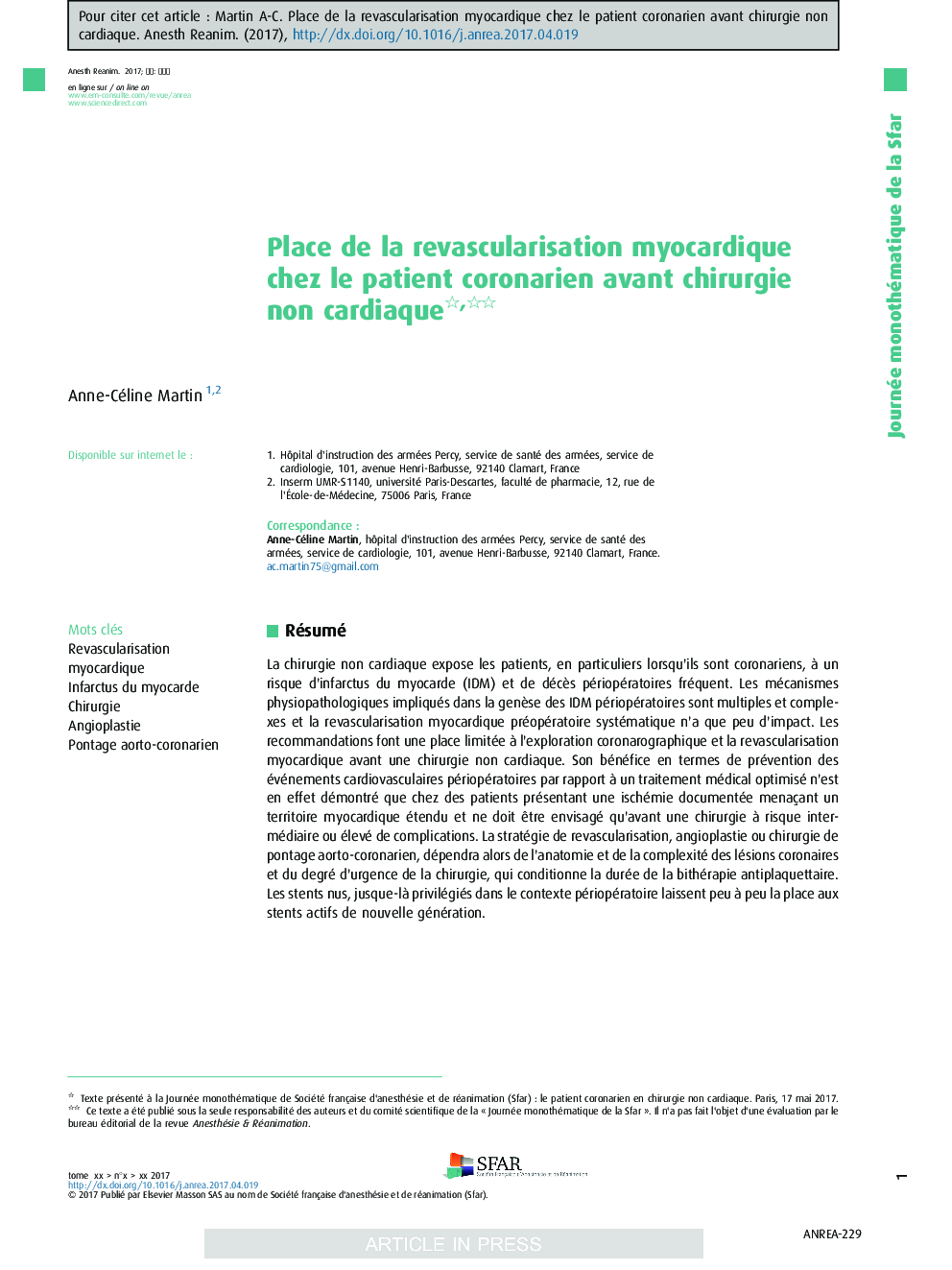| Article ID | Journal | Published Year | Pages | File Type |
|---|---|---|---|---|
| 5580414 | Anesthésie & Réanimation | 2017 | 6 Pages |
Abstract
Noncardiac surgery, especially in patients with coronary artery disease (CAD), exposes to frequent perioperative myocardial infarction (MI) and cardiac mortality. Pathophysiological mechanisms of perioperative MI are multiple and complex and prophylactic systematic myocardial revascularization has only little impact. In guidelines, indications for an invasive preoperative coronary angiography and subsequent revascularization are limited. As compared with optimal medical management, beneficial effects of myocardial revascularization in terms of perioperative major adverse cardiac events are limited to patients who have an extensive ischemia and should only be considered before intermediate-to-high surgery. The type of revascularization, coronary artery bypass graft or percutaneous coronary intervention, depends on the extent and complexity of CAD and technical feasibility, and on the urgency of the noncardiac surgery, which influences the duration of dual antiplatelet therapy. Bare metal stent advocated so far in order not to delay the surgery are gradually giving way to new generation stents.
Keywords
Related Topics
Health Sciences
Medicine and Dentistry
Anesthesiology and Pain Medicine
Authors
Anne-Céline Martin,
